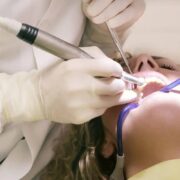
As you already know, labiaplasty is a surgical procedure that alters the labia minora and labia majora — the skin folds surrounding the vaginal opening.
However, like all other surgical interventions, labiaplasty may sometimes deliver results that don’t quite meet the patient’s expectations. And that’s where labiaplasty revision steps in.
Labiaplasty revision is a follow-up procedure that addresses any irregularities or dissatisfaction arising from the initial surgery. Various techniques for corrective labiaplasty exist, giving patients another shot at achieving the results they want.
Let’s find out if labiaplasty revision is the right solution for you.
What Would Make You Get a Labiaplasty Revision?
Various factors can make you turn to labiaplasty revision, including:
Asymmetry
Asymmetry is perhaps one of the most common reasons. You might feel that one side of your labia appears larger or has a different shape than the other after your initial procedure.
Symmetry is usually a key goal of labiaplasty; but due to surgical errors or complications following surgery, the results can sometimes be uneven.
Overcorrection or Undercorrection
A labiaplasty procedure could result in overcorrection, where too much tissue is removed, or undercorrection, where an insufficient amount is removed.
In cases of overcorrection, the person might feel that the labia minora has been overly trimmed, leading to aesthetic or functional issues.
Scarring
While skilled surgeons strive to minimize the visibility of scars, some people may have noticeable scarring from the first surgery.
Such scarring can alter the aesthetic outcomes and cause discomfort or even emotional distress — a revision procedure can help with this.
Lingering Discomfort
One of the primary reasons many women seek initial labiaplasty is to alleviate discomfort during activities like sexual intercourse, exercise, or wearing certain clothes.
If these issues persist after your surgery, it may mean that the initial labiaplasty may not have adequately addressed your concerns.
New Functional Issues
You might also consider labiaplasty revision because of new functional issues resulting from the initial procedure. These may include issues with hygiene maintenance, wearing tampons, or having a gynecological examination.
Techniques for Corrective Labiaplasty
Experienced surgeons use various techniques for corrective labiaplasty to address the issues mentioned above and more, according to the patient’s needs and circumstances. Common techniques include:
Direct Excision
This method is the simplest way of correcting irregularities left from the initial labiaplasty. It involves cutting away excess skin or scar tissue and then suturing the incision.
Central Wedge Resection
Central wedge resection might be used in cases where the initial labiaplasty resulted in asymmetry. The surgeon identifies an area of excess labial tissue, typically along the central part of the labium, and removes a wedge-shaped piece. The remaining edges are then sutured together.
Z-Plasty
Z-Plasty is a transposition flap technique to revise unsightly or uncomfortable scars. It involves rearranging tissue in a Z-shaped pattern, which helps redistribute forces along the scar line, minimizing its visibility and the tension caused by contracted tissue.
Fat Grafting
Sometimes, fat grafting is applied in cases of extreme overcorrection or scarring. Fat from another part of the patient’s body is harvested and placed into the labia, increasing volume and correcting any deficiency.
Finding the Right Surgeon
The key to a successful labiaplasty revision isn’t just about the technique used; it’s about choosing the ideal surgeon for the job.
A seasoned plastic surgeon will customize the procedure to match your needs, ensuring the most aesthetically pleasing outcome and reducing the likelihood of needing more corrective procedures in the future.
Frequently Asked Questions
When can I consider labiaplasty revision?
Patients should ideally wait for about five months post their original labiaplasty. By then, complete healing would have occurred, providing a clearer picture of the results.
Is recovery from labiaplasty revision painful?
While pain tolerance varies among patients, any pain or discomfort can be managed effectively with prescribed pain medication.
Will there be visible scars after labiaplasty revision?
Every surgical procedure, including labiaplasty, involves some degree of scarring. However, advanced techniques and the expertise of a skilled surgeon can significantly minimize its visibility.
Moreover, sutures are typically placed in the natural creases and folds of the labial skin, making the scars even less noticeable. Plus, they fade with time.
How long does a labiaplasty revision procedure take?
Most labiaplasty revision procedures take one to two hours, depending on the complexity of the case. The extent of correction required, any existing scar tissue, and whether there are additional procedures, all affect the duration.
What type of anesthesia is used in labiaplasty revision?
Although labiaplasty is usually done under local anesthesia, sedation or general anesthesia can be used for revisions based on the surgeon’s recommendation.
What is the recovery timeline for labiaplasty revision?
Most patients can return to regular activities within a week or two, while strenuous activities and sexual intercourse should be avoided for four to six weeks.
Can I have children after labiaplasty?
Yes. Labiaplasty does not affect a woman’s ability to bear children. However, changes from childbirth can alter the labia again, which might require a revision procedure.
Are there non-surgical options for labiaplasty revision?
Non-surgical options for labiaplasty are limited and may include radiofrequency (RF) and the use of laser energy. However, they can’t deliver the same level of revision as a surgical intervention.









